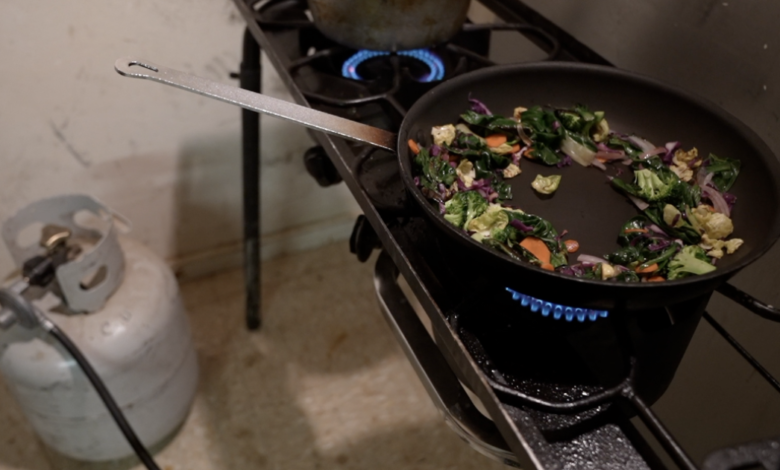
ROCKY RIDGE, Arizona — On a propane stove in a makeshift kitchen, Carlos Deal dreams up Japanese-inspired Navajo dishes. Recent items include lamb noodle soup and seasonal salads with homemade dressing.
His one-person catering company, AlterNativEats, is an innovative endeavor on a reservation gripped by poverty.
"We understand that the current system is not working for us, so we’re creating our own system," said Deal.
Their hardships are rooted in U.S. colonialism.
“They burnt all the crops, burnt the homes, burnt the fruit trees," said Deal. "We were introduced to government rations — flour, lard, cheese, beef, pork.”
The Scorched Earth Campaign annihilated the Navajo people and traditional food systems, with consequences persisting today. In the decades to follow, Navajo land was exploited for coal, oil and uranium.
Spanning 27,000 miles across four states, the reservation is largely considered a food desert. With only about a dozen supermarkets on the reservation, many residents rely on accessible convenience stores stocked with cheap, processed food.
“We need to get away from the bad diet, the chips. That’s the main goal – have food security and food sovereignty," said Deal. The great 'Native American Dream' is what it is. And we all share it.”
According to the CDC, about half of the Navajo adult population lives with either type 2 diabetes or prediabetes.
Deal is among native entrepreneurs fighting to bring fresh, healthy food to the reservation.
Posting new menus to Facebook each week, people can purchase nutritious, affordable meals from the Navajo-owned Rocky Ridge Gas and Market.
Deal gets much of his produce from Ch'ízhii Farms. He says the owner, Tyrone Thompsom, is helping residents live off the land, providing the skills and tools for sustainable farming.
Hoop houses with fresh produce are popping up across the reservation.
“I share it with my relatives," said Lorraine Herder. “I never thought I would have access to greens like this.”
But with no running water at home, her husband must haul it in. This is one of the many obstacles Herder and others face rebuilding traditions destroyed decades ago.
"What you’re doing now, documenting it, will be carried on to the next generation," said Deal. "The end of the rainbow isn’t my generation.”
For Deal, the alternative isn’t an option.
“We want to get out of poverty, want to have our own food, be healthy, live. We want to survive.”
At-home gardens could soon be more sustainable for indigenous people, with billions of infrastructure dollars going directly to tribes to improve water access.
And the USDA has launched several initiatives to support local farmers and promote traditional foodways.









